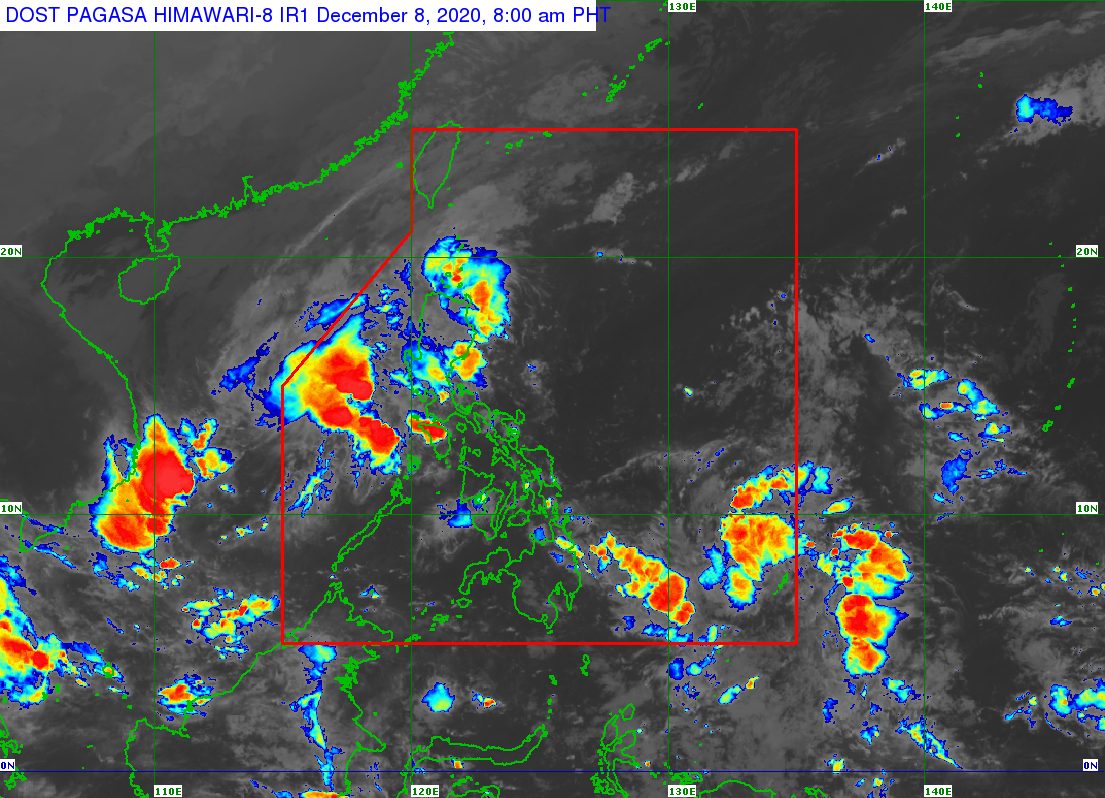SUMMARY
This is AI generated summarization, which may have errors. For context, always refer to the full article.

Scattered rain and thunderstorms are expected in parts of the Philippines on Tuesday, December 8, a special non-working day in the country for the Feast of the Immaculate Conception of Mary.
The Philippine Atmospheric, Geophysical, and Astronomical Services Administration (PAGASA) said in its 4 am forecast on Tuesday that the northeast monsoon or hanging amihan is affecting extreme Northern Luzon, while the easterlies are affecting the rest of the country.
The easterlies are warm winds coming from the Pacific Ocean.
In a separate rainfall advisory issued 8 am, PAGASA said light to moderate rain – with occasional heavy rain – is currently affecting these areas because of the easterlies:
- Metro Manila (Quezon City, Marikina City, Pasig City, Caloocan City, Valenzuela City)
- Quezon (General Nakar, Real, Infanta)
- Bulacan
- Rizal
- Tarlac
- Nueva Ecija
- Pampanga
Light to moderate rain will also hit these two provinces:
- Zambales
- Bataan
PAGASA warned of possible flash floods and landslides during moderate to heavy rain and severe thunderstorms.
Rainfall advisories are issued every 3 hours.
The northeast monsoon, meanwhile, is causing isolated light rain in the Ilocos Region. But the state weather bureau said there will be “no significant impact.”
The first week of December passed without a tropical cyclone in the Philippine Area of Responsibility (PAR).
The Philippines has had 21 tropical cyclones in 2020, exceeding the yearly average of 20. (READ: LIST: PAGASA’s names for tropical cyclones in 2020)
For the next 6 months, these are PAGASA’s estimates for tropical cyclones inside PAR:
- December 2020 – 1 or 2
- January 2021 – 0 or 1
- February 2021 – 0 or 1
- March 2021 – 0 or 1
- April 2021 – 0 or 1
- May 2021 – 0 or 1
La Niña has been underway since October, causing more rain than usual in the country.
The cold temperatures, usually experienced early morning, are due to the northeast monsoon and are seen to last until February 2021. – Rappler.com
Add a comment
How does this make you feel?
There are no comments yet. Add your comment to start the conversation.